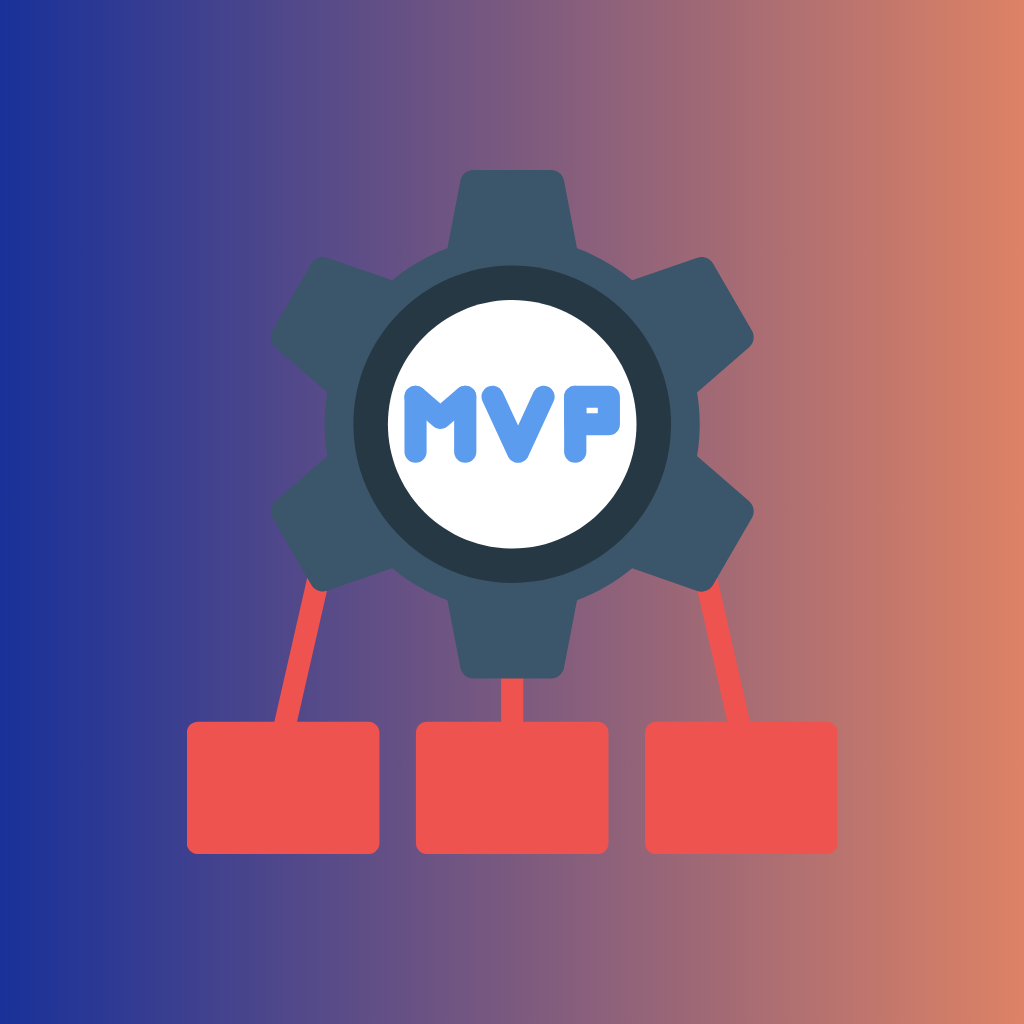Facebook, TikTok, Tinder, Uber. All these big players are posting very good figures within their respective fields. It has versatile usage with organising interface and app layouts to meet the expectation of a user experience. Nevertheless, it was not always the case. Not too long ago, these leading platforms came with low-functional features and basic graphical user interface and interaction features.
For example, Mark Zuckerberg with his creation of Facebook, launched what is known as minimum viable product (MVP) on February 4, 2004, as a social network for Harvard University students. During its initial phase, Facebook’s MVP had much simpler features, such as: Home page, profile, wall, message, friend requests, photo albums, among others, compared to the sophisticated platform in use today.
MVP has several benefits for a number of reasons. This makes it possible for organizations to take new products or services to the market at low costs while obtaining feedback from the customers where necessary in areas such as product design before a full scale launch. This way it becomes easier not to invest in a product and then take ages to sell because it did not meet the needs of the market.
This blog post will define an MVP, explain why it is important in the product development stage and outline the process of designing an appealing MVP. At the end of this post, you will have a clear picture of developing an MVP that will help pave the way to success.
I. What is an MVP?
Definition of MVP (Minimum Viable Product)
The minimum viable product, or MVP, is one of the most essential approaches that are embrace in today’s products development strategies. In this way, it enables you to take a simplified version of your product to a target market and within a short span of time, find out if the idea was viable and gathered equally important user feedback. It pays to focus on the core features and known problem space because this lets you confirm or invalidate hypotheses and make decisions from evidence in future iterations. MVP eliminates several possibilities and brings numerous benefits, and makes it possible to deliver the product that would meet real consumer demand.

Importance of MVP in the Development Process
The MVP approach is crucial in product development for several reasons:
- Validation of Ideas: Before committing significant resources to a full-scale product, an MVP helps validate whether there is a market need for the idea. It allows you to test assumptions and ensure that the solution resonates with your target audience.
- Resource Efficiency: Developing an MVP requires fewer resources compared to a fully-featured product. This approach saves time and money, reducing the risk of investing heavily in a product that may not succeed.
- Speed to Market: By focusing on core features, an MVP can be developed and launched quickly. This rapid development cycle enables companies to enter the market faster, gaining a competitive edge and establishing a presence before competitors.
- User Feedback: An MVP allows you to gather real user feedback early in the development process. This feedback is invaluable for understanding user needs, preferences, and pain points, helping you refine and improve the product based on actual user experiences.
- Iterative Development: The MVP approach supports iterative development, where the product is continuously improved based on user feedback and market demands. This iterative process ensures that the final product is closely aligned with what users want and need.
Benefits of Building an MVP
By designing and building an MVP, businesses can test their concept with real users and make necessary iterations before releasing the final version. Undoubtedly, having an MVP solution is beneficial to reduce risk, save money, and get funding.
- Reduced Risk: By launching with a basic version of your product, you minimize the risk associated with product development. If the MVP does not perform well, the financial and time investment is much lower than it would be with a fully developed product.
- Customer Insights: An MVP provides direct access to user feedback, which is crucial for understanding how customers interact with your product. This insight helps you make informed decisions about feature prioritization and product improvements.
- Market Validation: Launching an MVP allows you to test the market demand for your product. Positive reception and user engagement with the MVP indicate a strong potential for the full product, giving you confidence to invest further.
- Flexibility: Since an MVP is developed with minimal features, it is easier to pivot or adjust the product based on user feedback and market trends. This flexibility ensures that you can adapt to changes and optimize your product for success.
- Early Revenue: An MVP can generate early revenue, providing financial support for further development. Even with limited features, a well-received MVP can start bringing in customers and revenue, helping to fund future iterations and enhancements.
II. Steps to Building an MVP
Building an MVP involves a systematic approach and strategic planning to create a basic version of your product with essential features which validate your app idea and gather user feedback. This feedback ensures the refinement and success of your final product. Here’s a step-by-step guide on how to build an MVP that can garner investors’ attention:

1. Identify the Problem and Define the Solution
- Conduct Market Research
The first and foremost step to MVP development starts with conducting market research. It will help you understand the ever-changing needs of your target market and what they are looking for in a product or service. Many platforms conduct paid surveys and can help target the right respondents for your MVP in business.
- Understand Customer Pain Points
Engage with potential customers to understand their challenges and frustrations. Surveys, interviews, and focus groups can provide valuable insights into their pain points. Identifying these issues will guide you in defining a solution that addresses real problems.
- Define the Core Problem Your Product Will Solve
Clearly define the primary problem that your product aims to solve. This core problem will be the foundation of your MVP. Ensure that this problem is significant enough to warrant a solution and has a substantial user base needing it.
2. Define Your Target Audience
- Identify Your Ideal Customer
Determine who your ideal customers are. Consider demographics such as age, gender, location, occupation, and income level. Understanding these characteristics will help you tailor your product to meet their specific needs.
- Create User Personas
Develop detailed user personas to represent your target audience segments. These personas should include information about users’ goals, challenges, and behaviors. Creating personas helps you visualize and empathize with your users.
- Understand User Needs and Behaviors
Analyze user behaviors and needs through direct interaction and observation. Understand how users currently address the problem your product aims to solve. This understanding will help you design a solution that fits seamlessly into their lives.
3. Outline the MVP Features
- List Out Essential Features
Identify the core features that are essential for your product to function and solve the defined problem. Focus on the features that provide the most value to users and address their primary needs.
- Prioritize Features Based on User Needs
Prioritize the features based on user needs and the impact they will have on solving the core problem. Use techniques like the MoSCoW method (Must-Have, Should-Have, Could-Have, Won’t-Have) to categorize features and determine their importance.
- Avoid Feature Bloat by Focusing on Core Functionality
Resist the temptation to include too many features in the initial version. Focus on the core functionality that delivers the main value to users. Feature bloat can complicate development and distract from the primary purpose of the MVP.
4. Create a Prototype
- Develop Wireframes and Mockups
Create wireframes and mockups to visualize the user interface and user experience of your product. These visual representations help you plan the layout, navigation, and interactions of your MVP.
- Use Prototyping Tools (e.g., Sketch, Figma)
Utilize prototyping tools like Sketch, Figma, or Adobe XD to build interactive prototypes. These tools enable you to create clickable prototypes that simulate the user experience, allowing you to test and refine the design before development.
- Gather Initial Feedback from Stakeholders and Potential Users
Share the prototype with stakeholders and potential users to gather initial feedback. This feedback helps you identify any design flaws or usability issues early in the process, allowing for adjustments before development begins.
5. Develop the MVP
- Choose the Right Technology Stack
Select the appropriate technology stack for your MVP based on the product’s requirements, scalability, and development time. Consider factors like ease of use, compatibility, and community support when choosing technologies for the front-end and back-end.
- Develop the Front-End and Back-End
Begin the development process by building the front-end and back-end of your MVP. Ensure that the development team follows best practices for coding, security, and performance optimization.
- Integrate APIs and Other Necessary Tools
Integrate any required APIs and third-party tools that enhance your MVP’s functionality. This could include payment gateways, analytics tools, or other services that are essential for your product’s operation.
6. Test Your MVP
- Conduct Usability Testing
Conduct usability testing to evaluate how real users interact with your MVP. Usability testing helps identify any issues with the user interface, navigation, and overall user experience. Make sure the testing involves a diverse group of users to get comprehensive feedback.
- Gather Feedback from Real Users
Collect feedback from users who interact with your MVP. This feedback is crucial for understanding user satisfaction, identifying bugs, and uncovering areas for improvement. Use surveys, interviews, and feedback forms to gather detailed insights.
- Iterate and Improve Based on User Feedback
Use the feedback to iterate and improve your MVP. Prioritize fixes and enhancements based on the feedback received, ensuring that the most critical issues are addressed first. Continuous iteration helps refine the product, making it more valuable and user-friendly over time.
Building a Minimum Viable Product (MVP) is a fundamental strategy in modern product development. It allows you to bring a simplified version of your product to market quickly, test its viability, and gather critical user feedback. By focusing on core features and solving a specific problem, you can validate your ideas and make data-driven decisions for future development. The MVP approach minimizes risks, conserves resources, and helps ensure that your product meets real market needs.
For startups and tech companies, the MVP strategy offers numerous benefits:
- Market Validation: Testing your product idea in the real world ensures that there is genuine demand, reducing the risk of failure.
- Resource Efficiency: Developing an MVP requires fewer resources, saving time and money while still delivering value to early adopters.
- User-Centric Development: Gathering feedback from actual users allows you to tailor your product to their needs, increasing the likelihood of success.
- Flexibility: An MVP provides the flexibility to pivot or adjust your product based on user insights and market trends.
- Early Revenue: Even a basic version of your product can start generating revenue, which can be reinvested into further development.
In conclusion, building an MVP is a smart, strategic approach for startups and tech companies aiming to develop successful products. By starting small, focusing on solving a core problem, and iterating based on user feedback, you can create a product that not only meets market demands but also stands a greater chance of long-term success. So, take the plunge, build your MVP, and let real-world feedback guide your product development journey.








